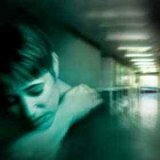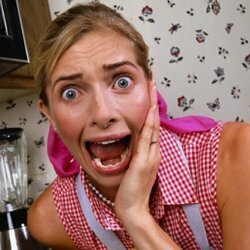Psychiatry: Perceptual Disorder
 Psychiatry, a perception disorder refers to mental pathologies. Perception is a complex of sensations, through it we receive information about the world around us. Sensations consist of five senses: sight, hearing, smell, touch and taste. The result of the process of perception is the whole image of the world, the interaction of objects and an understanding of their qualities and properties. Violation of the work of one or more sensory organs is a disorder of perception.
Psychiatry, a perception disorder refers to mental pathologies. Perception is a complex of sensations, through it we receive information about the world around us. Sensations consist of five senses: sight, hearing, smell, touch and taste. The result of the process of perception is the whole image of the world, the interaction of objects and an understanding of their qualities and properties. Violation of the work of one or more sensory organs is a disorder of perception.
Perception disorders are represented by the following disorders:
- illusion
- agnosia
- hallucination
- psychosensory disorders
Under illusion, the real object is perceived as different. For example, a robe hanging on a hanger is taken as a human figure. There are three kinds of illusions: physical, physiological and mental. Physiological arise from external factors, often due to the laws of physics. So, a cup in a glass with a liquid seems to be broken, whereas it is an optical illusion of sight. Physiological illusions are associated with the peculiarities of the work of receptors. For example, after a heavy load, a light load seems heavy. Mental illusions arise because of the emotional state of a person. A constantly worried person always hears the pursuer's steps. A person who is in a state of intoxication, sees the object in a distorted form. In this same state, people often see paradeyolical illusions when existing objects are replaced by erroneous images. For example, from the picture of the wallpaper there are whole pictures or actions, similar to theatrical ones. Also classify illusions in the sense organs. There may be visual, auditory, olfactory, gustatory and tactile. However, it should be remembered. That not always the presence of illusions indicates a disease, because they can occur in mentally healthy people, due to objective reasons.
Psychiatry perceives a non-existent object at the moment as a hallucination. Patients perceive such things as real and critical, for their part, they are. Attempts to convince a patient of the absence of an object can cause only irritations, since the person is sure of the opposite. Hallucinations are classified according to certain criteria: content, complexity, interest, etc. The complexity of hallucinations is elementary( photopsy - shapeless images and acoasms - obscure noises and hailings), simple( one analyzer is involved) and complex( severalAnalyzers).The most frequent cases are visual and auditory hallucinations. Visuals are manifested in the vision of single or multiple images, differing from each other in behavior towards the patient, seeing them, mobility or immobility, etc. The image can be perceived by peripheral vision. In this case, it is called extracampin, and if a person sees his double, it is an autoscopic hallucination. With auditory hallucinations, the patient hears the sound of howling wind, the rustling of trees. Most often, auditory hallucinations consist of verbal hallucinations, for example, voices of both acquaintances and strangers, both one person and a group of people. These voices are divided into neutral, indifferent or threatening the patient. Voices manifest themselves in different ways, they can scold, ask questions, order, comment on the actions of a person, threaten, suggest correcting. The most dangerous for the patient( for others around him too) are the voices that order( imperative hallucinations).They can be harmless, for example, order to go to visit, drink tea, and dangerous, for example, an order to kill or suicide. Most often the patient can not resist these orders and follows them. It happens that the patient asks someone to limit it so as not to do anything terrible.
With tactile hallucinations there is a feeling of crawling on the surface of the skin or under it of insects, while a person can describe these insects in detail. Rare are olfactory and tactile hallucinations. Olfactory are manifested in a sense of unpleasant odor, and taste - in the taste of unpleasant taste, regardless of the taste of the food.
There is a whole series of kinds of hallucinations. Real hallucinations very harmoniously fit into the surrounding world, have signs of reality. Patients are sure that other people also perceive these objects, but for some reason they hide it. Hallucinogenic images affect the behavior of the patient, which becomes appropriate to their content.
Psychiatry - a disorder that differs from true hallucinations in that it does not fit into the environment and does not carry signs of reality, is projected into the person, for example, the voice is heard not from the outside, but as if it was built into the head, is called pseudo-hallucination. Often pseudo-hallucinations do not affect human behavior, so often people do not realize that next to them there is a hallucinating person.
Psychosensory disorders( violations of sensory synthesis) differ from illusions and hallucinations in that a really existing object is perceived as it should, but in a distorted form. There are two forms of psychosensory disorders: derealization and depersonalization. Derealization is a distorted perception of the world. The patient feels that the world has become some other, changed its properties and qualities. This perception is characteristic of depressing people who say that the world has lost its colors. Derealization can be manifested in a distorted perception of the properties of an individual object, for example, size, shape, etc. In a micropsy, the object is seen to be reduced, and in case of a macro-enlargement, the object is distorted.
Depersonalization is of two kinds - somatopsychic and autopsychic. With somatopsychic depersonalization, there is an experience, a change in the size and shape of the human body. The patient may feel that he has grown significantly or has become heavier. In autopsychic depersonalization, changes in one's self are experienced. Patients claim that their personal qualities have changed, their character has deteriorated.



